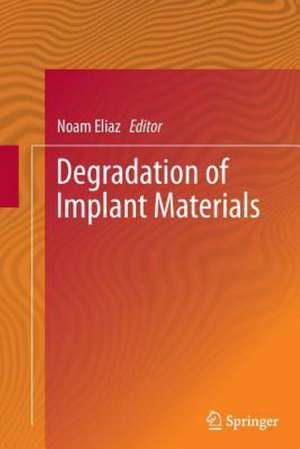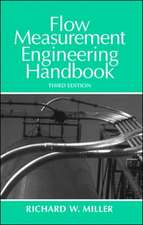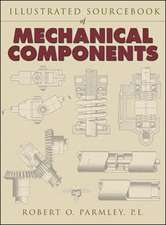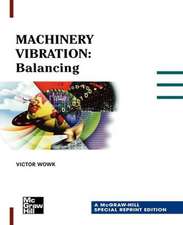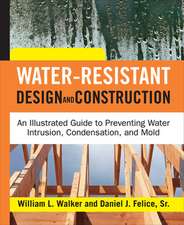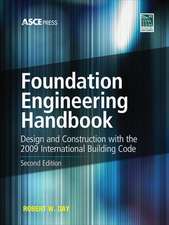Degradation of Implant Materials
Editat de Noam Eliazen Limba Engleză Paperback – 19 sep 2014
| Toate formatele și edițiile | Preț | Express |
|---|---|---|
| Paperback (1) | 955.56 lei 6-8 săpt. | |
| Springer – 19 sep 2014 | 955.56 lei 6-8 săpt. | |
| Hardback (1) | 959.98 lei 6-8 săpt. | |
| Springer – 21 aug 2012 | 959.98 lei 6-8 săpt. |
Preț: 955.56 lei
Preț vechi: 1165.32 lei
-18% Nou
Puncte Express: 1433
Preț estimativ în valută:
182.90€ • 198.74$ • 153.74£
182.90€ • 198.74$ • 153.74£
Carte tipărită la comandă
Livrare economică 22 aprilie-06 mai
Preluare comenzi: 021 569.72.76
Specificații
ISBN-13: 9781489985699
ISBN-10: 1489985697
Pagini: 528
Ilustrații: XII, 516 p.
Dimensiuni: 155 x 235 x 28 mm
Greutate: 0.74 kg
Ediția:2012
Editura: Springer
Colecția Springer
Locul publicării:New York, NY, United States
ISBN-10: 1489985697
Pagini: 528
Ilustrații: XII, 516 p.
Dimensiuni: 155 x 235 x 28 mm
Greutate: 0.74 kg
Ediția:2012
Editura: Springer
Colecția Springer
Locul publicării:New York, NY, United States
Public țintă
ResearchCuprins
Medical implant corrosion: Electrochemistry at metallic biomaterial surfaces.- Degradation of titanium and its alloys.- Degradation of dental implants.- In vivo aging and corrosion aspects of dental implants.- Biodegradable metals.- Degradable and bioactive synthetic composite scaffolds for bone tissue engineering.- Biodegradation of calcium phosphate cement composites.- Enzyme-promoted degradation of polymeric matrices for controlled drug delivery: Analytical model and numerical simulations.- Degradation of bioceramics.- Fundamentals of tribology and the use of Ferrography and bio-Ferrography for monitoring the degradation of natural and artificial joints.- Fatigue failure of materials for medical devices.- Hypersensitivity to implant debris.- Implant infections and infection resistant materials.- Biomaterial calcification: Mechanisms and prevention.- Orthopaedic implant retrieval and failure analysis.- The use of finite element analysis in design, life prediction and failure analysis of biomaterials and medical devices.- Biological safety evaluation of polymers.- Biological responses to and toxicity of nanoscale implant materials.
Recenzii
Prof. Eliaz has skillfully edited a volume of medical importance containing chapters by various experts on degradation of implants. The book will be of major interest to engineers and to surgeons planning implantation.
- Prof. Zvi Hashin Department of Solid Mechanics, Materials and Structures, Tel Aviv University
- Prof. Zvi Hashin Department of Solid Mechanics, Materials and Structures, Tel Aviv University
Notă biografică
Noam Eliaz is an Associate Professor at Tel-Aviv University, Israel, where he serves as the Head of The Biomaterials and Corrosion Laboratory. He also serves as a Chief Editor of the journal Corrosion Reviews (jointly with Ron Latanision). He received his B.Sc. and Ph.D. (direct track) in Materials Engineering, both cum laude, from Ben-Gurion University. Next, he became the first ever materials scientist to receive, simultaneously, a Fulbright postdoctoral award and a Rothschild postdoctoral fellowship and worked for two years in the H.H. Uhlig Corrosion Laboratory at M.I.T. To-date, he has contributed more than 230 journal and conference publications, including 31 plenary and invited talks, as well as 5 book chapters. In addition to editing this Degradation of Implant Materials book, he has edited a double volume entitled Applications of Electrochemistry and Nanotechnology in Biology and Medicine for the reputed book series Modern Aspects of Electrochemistry (Springer). He has garnered numerous accolades, including the T.P. Hoar Award for the best paper published in Corrosion Science during 2001 (on corrosion of Ti-Ag-based alloys processed by three-dimensional printing for biomedical applications), and NACE International’s Herbert H. Uhlig Award (2010) and Fellow Award (2012). His main research interests include environment-induced degradation of materials, failure analysis, Bio-Ferrography, biomaterials (with focus on electrocrystallization of hydroxyapatite and other calcium phosphates), and electrochemical processing (namely, electrodeposition, electroless deposition and electropolishing) of materials.
Textul de pe ultima copertă
This book focuses on degradation of biomaterials, which is one of the major considerations in their design, processing and use. It introduces the reader to the body environment and to the mechanical, chemical, electrochemical and biological processes that are responsible to the degradation of biomaterials. The outcomes of degradation are discussed in detail. Different failure mechanisms such as corrosion, fatigue, wear, infection and calcification are reviewed, together with experimental techniques for monitoring them. Procedures for implant retrieval and failure analysis are presented. The degradation of a wide spectrum of materials is reviewed, from several kinds of metals to various polymers and composites. A variety of medical devices is analyzed, including hip and knee prostheses, dental implants, permanent and absorbable stents, heart valves, inferior vena cava filters, breast implants, ophthalmic implants, intrauterine devices, and drug delivery devices.
All chapters are written by world renowned experts. Thus, this book is a must-have for anyone wanting to become familiar with this area, including scientists, engineers, implant manufacturers, and venture capitalists. This book will be valuable for materials, mechanical, biomedical and corrosion engineers; biologists and doctors; chemists and electrochemists; surface scientists, and failure analysts.
All chapters are written by world renowned experts. Thus, this book is a must-have for anyone wanting to become familiar with this area, including scientists, engineers, implant manufacturers, and venture capitalists. This book will be valuable for materials, mechanical, biomedical and corrosion engineers; biologists and doctors; chemists and electrochemists; surface scientists, and failure analysts.
Caracteristici
First book since 1985 to focus on the degradation of impant materials Written by international pioneers in the field hailing from a wide variety of disciplines
